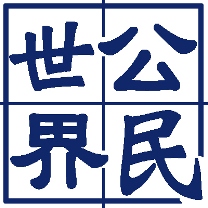今天來看幾個英文簡報中常見的錯誤。這些錯誤因為不大,所以我們常常沒有發現,這樣講原來是錯的。而發現這些錯誤的好處是,我們對文法規則會有一種全新的認識。
1.謝謝各位今天到場
(X)Thank you for your coming.
(O)Thank you for coming.
"Thanks for your coming."這句話幾乎出現在每一場簡報的開場白,但其實這樣一開口就錯了。雖然老外也懂,所有格一般加在名詞前面,coming是一個分詞,之前加了一個所有格,顯得特別拗口,老外不會這麼說。但如果thank you for後面加名詞,文法上是可以的。例如:
(O)Thank you for your attention.(謝謝您的關注。)
(O)Thank you for your help.(謝謝您的幫忙。)
2.請翻到最後一頁
(X)Please turn to the final page.
(O)Please turn to the last page.
Last和final都有「最後」的意思,大家容易混淆。Last是與first是相對的意思,指「順序中的最後一個」,例如「最後一班」公車要用the last bus。
Final多半和順序無關,主要表示「結局」,經常有決定性的含意。例如:This is your final chance.(這是你的最後一次機會。)
3.一開始,我想向大家介紹我們的團隊
(X)To begin, I'd like to introduce you our team members.
(O)To begin, I'd like to introduce our team members to you.
Introduce也是簡報場合最常見的動詞。有一類動詞帶有「說」的成份,像say, explain, report, describe, mention, announce, propose, repeat, introduce,這些動詞不能接雙受詞。來看幾個例子:
請解釋這個圖表。
(X)Explain me this chart.
(O)Explain this chart to me.
我只是想來跟他打聲招呼。
(X)I just came to say him hello.
(O)I just came to say hello to him.
4.為強調我的想法,我在最後一頁提供一些數據
(X) To emphasize on my point, I have provided some data on the last page.
(O) To emphasize my point, I have provided some data on the last page.
Emphasize意思是「強調」,它只能夠當「及物動詞」,意即後面必須直接加受詞,不需要on。
同樣只能當「及物動詞」的例子,再參考幾例:
我們討論吧。
(X)Let's discuss.
(O)Let's have a discussion./ Let's discuss this matter.
我沒想到你會拒絕。
(X)It never occurred to me that you would reject.
(O)It never occurred to me that you would refuse.
Reject只能當「及物動詞」,後面一定要有受詞,例如He rejected my plan.(他拒絕我的計畫。)Refuse則有「及物」和「不及物」兩種用法。
責任編輯:易佳蓉
核稿編輯:李頤欣







